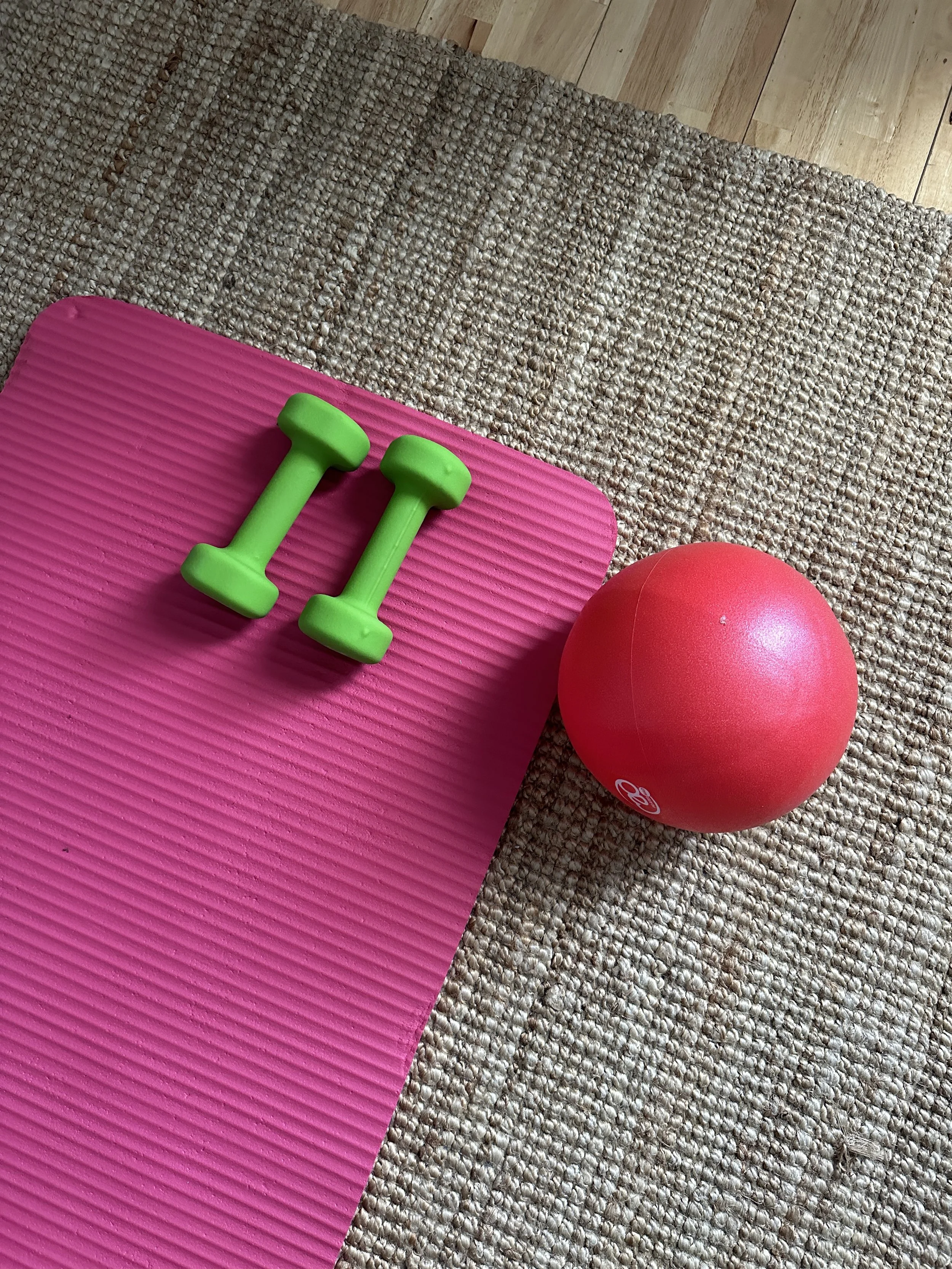Let’s talk about how to make this year a transformative one for your body and mind, with a special focus on strength, mobility, and balance—especially during those pivotal years during perimenopause and menopause.
Dry Needling and Physical Therapy
What is Dry Needling and How Does it Work?
While the name of the treatment may sound intimidating or scary, dry needling is safe, minimally discomforting and often an effective technique for patients with certain musculoskeletal presentations. Dry needling is a treatment performed by skilled, trained physical therapists, certified in the procedure. A thin monofilament needle penetrates the skin and treats underlying muscular trigger points for the management of neuromusculoskeletal pain and movement impairments.
What’s a trigger point, you ask? It’s a tight band in a muscle fiber that can cause disruption in function, change or restrict range of motion, or can cause pain and tenderness. When the trigger point is treated with dry needling, it can increase blood flow and decrease tightness and pain.
We Typically Use Electronically Stimulated Dry Needling
Although dry needling sounds very similar to acupuncture, and they use similar equipment, they are entirely different procedures. Dry needling is performed by different practitioners with different training. Acupuncture is based on Eastern medicine, while dry needling is rooted in Western medicine and evaluation of pain patterns, posture, movement impairments, function and orthopedic tests.
In fact, at Klein Physical Therapy, we typically use electronic stimulation when we dry needle. The electronic “stim” helps with more effective release and also improved facilitation of the muscle as well (how it contracts).
Who can Benefit from Dry Needling and is it Painful?
Dry needling is typically used as one treatment in an overall plan that may also include physical therapy, heat therapy and education. Those patients experiencing any of the following symptoms, may benefit from dry needling: joint or disk problems, tendonitis, migraines, jaw and mouth problems, whiplash, pelvic pain, phantom pain, or spinal problems. Patients who are pregnant or who are very afraid of needles should avoid this treatment in the first trimester and consult with a medical professional before moving forward.
Dry needling may benefit me, but will it hurt? Dry needling can be painful depending on the severity of the injury and the location of the sore or tight muscle(s). The muscle may experience a slight contraction once the needle is inserted through the skin which may cause some pain or twitching. Interestingly enough, this reaction can be a good sign because it means the trigger point has been hit.
After the treatment, patients may experience soreness in the area for up to 48 hours, but this should not be cause for concern. Each patient should always keep open communication with their provider should they be experience pain that lasts for more than 48 hours or if they feel the pain is too intense.
Possible Side Effects from Dry Needling
Although there are typically always minor side effects with dry needling, such as bruising, minimal bleeding or temporary soreness, major side effects are extremely rare. The biggest risk factor to always double check with your provider is if they’re using sterile needles and that they dispose of these needles after each treatment. Also, be very sure that your practitioner is qualified, educated and trained in this method. Pneumothorax (when needling in the lung field) is a rare possibility. That’s why it's so important to go to a provider who is proficient at it. (Hint: we are highly experienced in Dry Needling)
Conclusion on Dry Needling
Overall, dry needling can be effective if used within a comprehensive health plan. It’s always a good idea to look at the root of the problem and try to prevent injuries first. Be sure to seek out a medical professional you can trust and who has a legit background in dry needling. Lastly, dry needling isn’t always covered by health insurance agencies. Be sure to call your health insurance provider to inquire about costs first.
Interested in Dry Needling? Come in for a Discovery Session at Klein Physical Therapy, P.C.
References:
Mayo Clinic Health System https://mayoclinichealthsystem.org/hometown-health/speaking-of-health/on-pins-and-needles-just-what-is-dry-needling
American Physical Therapy Association https://www.apta.org/PTinmotion/2015/5/dryneedling/
Healthline https://www.healthline.com/health/dry-needling-vs-acupuncture
Fast Track Physical Therapy https://www.fast-tracktherapy.com/services/dry-needling/
Runners Connect https://runnersconnect.net/dry-needling-effective-safe/
Cleveland Clinic https://my.clevelandclinic.org/health/treatments/16542-dry-needling
PT for LBP (Lower Back Pain)
Ouch!!! Not again….
If you’re a lower back pain sufferer… you know when you’ve pulled “that” muscle again. And, you know that you’re in for 2 or more weeks of acute pain. This can limit your activity and impair your work performance. It can stop you from playing with your kids, exercising, or enjoying nearly every activity.
Physical Therapy for Lower Back Pain
If you’re an “LBP” sufferer (what we call it at Klein Physical Therapy in Denver), you know that there isn’t much that helps…. except physical therapy. The muscles in your lower back (the erector spinae muscles), help support your spine and connect to your gluteal muscles. They have a lot of work to do! When your core is weak, your back muscles can try to support everything on their own… which can lead to inflammation when they are agitated. (aka, pain!)
Physical therapy for back pain in Denver is a very highly searched phrase. That’s because this kind of lower back pain is so common for so many of us humans. I mean technically… we aren’t “supposed” to even be walking upright. When our ancestors started this trend, it helped us a lot, but also created some issues… such as babies having to develop outside the womb in the fourth trimester, and, you guessed it, lower back pain.
Can You Heal Chronic Lower Back Pain with Physical Therapy?
So, we know it helps, but can physical therapy actually heal lower back pain? Yes, you actually can. And if you can’t heal it all the way, physical therapy can severely reduce the pain you experience. If you’ve tried other healing modalities (massage for one), you might have discovered that the muscles in your lower back are extremely hard to get to. It takes muscle training and strengthening to get the right tension in the supporting muscles so that one is not doing the job of two, three, four or more others (which can result in a strain or sprain).
Welcome to Klein Physical Therapy
We are a team a physical therapists that are dedicated to making sure you can move! (Properly and in a way that doesn’t create pain!). We can help you strengthen your core and live a life that doesn’t have to be so painful. Lower back pain is difficult to live with. If it’s affecting areas of your life (sleep, work, family), we can’t encourage you enough to try physical therapy. If you’ve done everything except tried PT and you’re curious if it could help, try a complimentary discovery session by clicking here.
Try a Discovery Session
On a limited, first-come, first-served basis, we are offering 30 minutes of our time to help you determine whether Physical Therapy might be right for you. Never tried PT? Wondering if it will work for your specific issue? Try a 30-Minute complimentary Discovery Session with one of our Physical Therapists and get back to doing the things you love.






